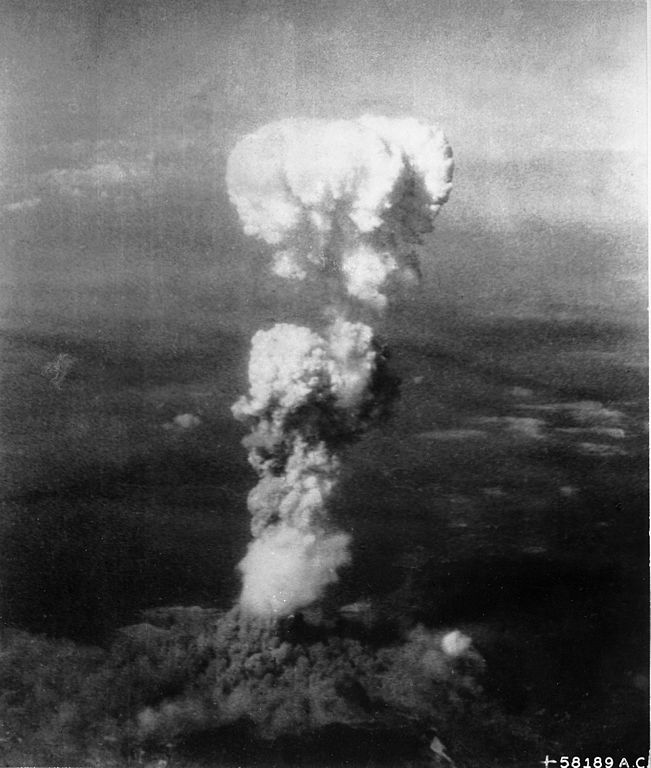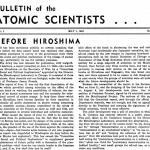Hiroshima, Nagasaki and the current state of nuclear affairs
By John Mecklin | August 6, 2017

Every year, early in August, news organizations around the world publish articles about the instant mass death inflicted at Hiroshima and Nagasaki in 1945, restating the arguments for and against the United States’ use of atomic bombs just before the end of World War II. This anniversary-of-horror coverage is always poignant. What sort of monster, after all, could remain unmoved when confronted with the instantaneous incineration of tens of thousands of unsuspecting civilians and the horrendous types of suffering that survivors endured?
Among the worthiest of the atomic retrospectives published this week is Ariel Dorfman’s brilliant little essay on the meaning of the Ginkgo trees that survived the Hiroshima bombing. (I will not summarize the piece here, for fear of strangling the lyricism you will experience while reading it.) Also more than worthwhile is the Guardian’s exploration of the mix of rehabilitation and memorialization that characterizes today’s Hiroshima, something the Guardian’s headline writers aptly term the city’s psychogeography. Two very different pieces with very different approaches provide quality factual accounts of the Hiroshima bombing: “The Story of 25 Hiroshima Bombing Survivors You Should Know” offers the latest proof that Teen Vogue is rapidly becoming the magazine for stylish young women who think. And the New York Times’ The Daily 360 feature uses various modeling and mapping technologies to help viewers imagine, in the round, from above, the attack on Hiroshima.
The reason for reflecting on the bombings in southern Japan on August 6 and August 9, 1945 seems especially obvious in this era of renewed nuclear bombast and brinksmanship. Given the tensions between the United States and Russia, it’s probably worthwhile for everyone—especially everyone in the White House and Kremlin—to read or re-read one of the Bulletin’s most harrowing and most viewed articles, “What would happen if an 800-kiloton nuclear weapon detonated above midtown Manhattan.” National leaders who have fantasies about surviving a nuclear war in bunkers for the elite should note this sentence well: “Even those able to find shelter in the lower-level sub-basements of massive buildings would likely suffocate from fire-generated gases or be cooked alive as their shelters heated to oven-like conditions.”
The Economist, meanwhile, has addressed what might be the world’s most urgent nuclear situation with a fictional but well-imagined account of “How a nuclear war in Korea could start, and how it might end.” The piece (which is behind the magazine’s subscription paywall but can be read for free by signing up for the magazine’s email newsletter) has a sub-headline that effectively sums up the consequences of any 21st century use of nuclear weapons, on the Korean peninsula or elsewhere: “Everyone would lose.”
Publication Name: The Economist
To read what we're reading, click here
Together, we make the world safer.
The Bulletin elevates expert voices above the noise. But as an independent nonprofit organization, our operations depend on the support of readers like you. Help us continue to deliver quality journalism that holds leaders accountable. Your support of our work at any level is important. In return, we promise our coverage will be understandable, influential, vigilant, solution-oriented, and fair-minded. Together we can make a difference.
Share: [addthis tool="addthis_inline_share_toolbox"]














